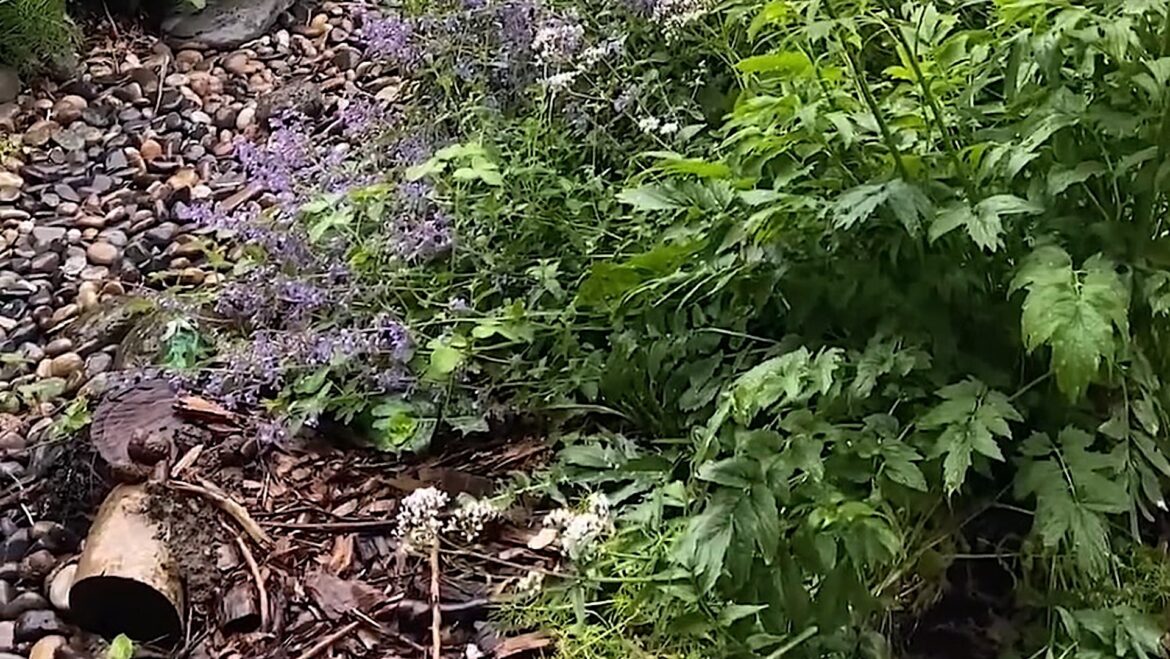A simple backyard garden design is proving to be a powerful tool against water pollution.
By sharing a video of her rain garden in action, one gardener highlighted how these mindful spaces slow rainwater runoff, filter out chemicals, and support local wildlife.
In a YouTube Short, Angela Baker of Parkrose Permaculture (@ParkrosePermaculture) in Oregon documented her lush rain garden during a mid-June storm.
With filtering pebbles, vibrant greenery, and the sounds of local birds, the tranquil space demonstrated how rain gardens capture and reuse stormwater — and create a thriving habitat for native ecosystems.
This type of landscape design is becoming increasingly important as pollution-driven climate shifts lead to heavier and more frequent rainfall.
A rain garden is a specially landscaped area with native grasses, flowers, and shrubs designed to collect and absorb rainwater runoff.

Want to go solar but not sure who to trust? EnergySage has your back with free and transparent quotes from fully vetted providers that can help you save as much as $10k on installation.
To get started, just answer a few questions about your home — no phone number required. Within a day or two, EnergySage will email you the best local options for your needs, and their expert advisers can help you compare quotes and pick a winner.
When it rains, water runs off hard surfaces like roofs and driveways, collecting pollutants from fertilizer, landscaping chemicals, motor oil, garbage, and bacteria along the way.
Instead of letting this excess water rush into storm drains — carrying collected pollution with it — a rain garden slows it down, filtering the water through soil and plants. In doing so, it helps reduce flooding, recharges groundwater, and supports local biodiversity.
The Groundwater Foundation explained that building a rain garden usually involves removing six to 12 inches of soil and replacing it with a mix of tillage, compost, and sand to improve water absorption.
Although rain gardens hold and filter water during and after storms, they remain dry most of the time, which means they don’t create breeding grounds for harmful mosquitoes.
TCD Picks » Upway Spotlight
💡Upway makes it easy to find discounts of up to 60% on premium e-bike brands
The EPA estimates that pollutants carried by runoff account for 70% of all water pollution. According to the Groundwater Foundation, rain gardens can filter out up to 90% of chemicals and nutrient build-up from runoff, along with up to 80% of sediments. Rain gardens also allow for 30% more water to soak into the ground than a traditional lawn.
Baker’s gorgeous rain garden quickly drew praise from video viewers inspired by the results. Many said it motivated them to try building their own rain gardens at home.
“I am seriously considering creating one in my backyard as a way to deal with the overflow from my rainwater tank,” one commenter wrote.
Another commenter added, “Yours inspired mine!”
Join our free newsletter for easy tips to save more and waste less, and don’t miss this cool list of easy ways to help yourself while helping the planet.


Comments are closed.